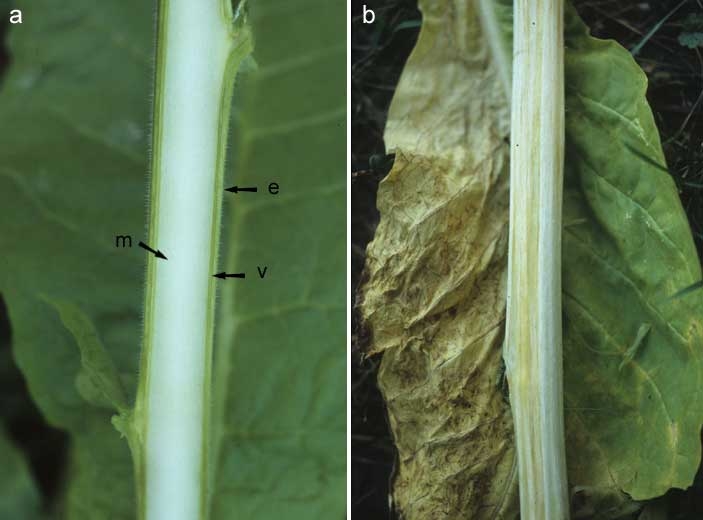
Stem lesions
We have grouped all the symptoms presented in the section of Stem lesions into three sub-headings:
- Lesions from wounds and senescent tissues, i.e. developing frequently from injuries during topping or harvesting;
- Stem abnormalities and lesions (at any location of the stem) (figure 1);
- Internal stem lesions (figure 2 and 3).
 |
 |
 |
| Figure 1 | Figure 2 | Figure 3 |
When such lesions occur, many diseases can be considered, particularly parasitic diseases caused by:
- bacteria such as Pectobacterium spp. (formerly Erwinia spp.) and Ralstonia solanacearum;
- several related fungi and alike such as Botrytis cinerea, Colletotrichum capsici f. sp. nicotianae, Fusarium oxysporum f. sp. nicotianae, Peronospora hyoscyami f.sp. tabacina, Sclerotinia sclerotiorum and Verticillium dahliae;
- Some viruses, including cucumber mosaic virus (CMV), potato virus Y (PVY), tomato spotted wilt virus (TSWV), and so on...
Some non-parasitic diseases may also cause symptoms affecting the stem, such as root primordia, physiological bursts, fasciation, a scappy appearance ("scabby stalk"), a breakdown of internal tissues (lightning injury ) , external impacts (hail injury), and many other symptoms often associated with chemical injuries.
In the presence of symptoms on the stem, we also recommend you consult the section on the Root and collar abnormalities and alterations. It may sometimes complete and help your diagnosis.





